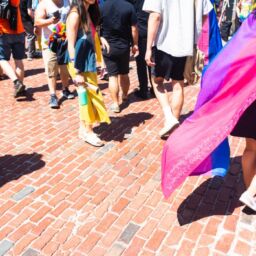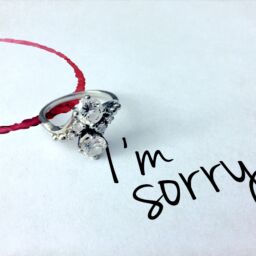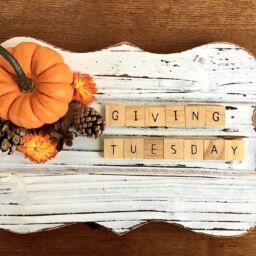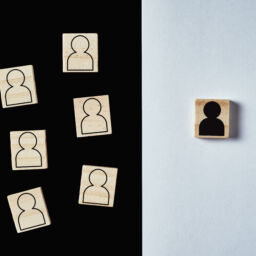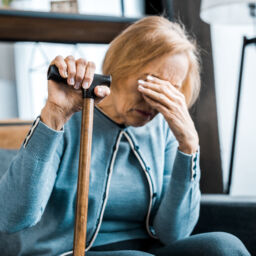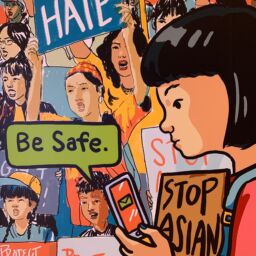
Non-Binary Abuse
by- Whitney Derman
Who identifies as Non-Binary?
Non-Binary individuals identify outside of the male/female gender spectrum. Someone can identify with multiple genders, no gender, or a different gender altogether (La Fuente Hollywood Treatment Center [La Fuente], 2021). Non-Binary people also do not stick to one aesthetic; some men present more masculine, others may present more feminine, and this may change from day to day (La Fuente, 2021). A key part to of understanding non-binary people is to recognize that gender is not dependent on sex or how a person looks (either by presentation or biology), but it is instead based on a person’s acknowledgement of their self and identity. Although we hear about non-binary people more often now, it is far from a new identity. Many non-western cultures have third genders; some are even regarded as gods (La Fuente, 2021).
Abuse Against Non-Binary People
Although people are becoming educated on non-binary identities, this topic is seldom discussed, and the number of non-binary people is much higher in reality than earlier studies suggest. “Despite nearly 3% of teens stating that they don’t identify with traditional gender labels such as ‘boy’ or ‘girl’…prior to the 2018 study that put forth the 3% figure, many researchers believed the number to be less than 1%” (La Fuente, 2021). Oftentimes, non-binary people stay in the closet because of the lack of understanding of what their identity means. The Human Rights Campaign Foundation and the University of Connecticut’s 2018 report shows that non-binary youth are about half as likely to be out compared to trans men and women (Human Rights Campaign, 2018). “Researchers don’t know why, but some believe non-binary people fear their identity will be invalidated when coming out” (La Fuente, 2021). In many cases, these fears are not unfounded.
Besides worrying about friends and family misgendering and invalidating them, non-binary people also face invalidation at the federal level. For example, many struggle to get IDs that align with their gender identity, something the majority of us take for granted. Currently, “more than half of U.S. states and foreign countries either have no options for revising official documents, require surgery, and/or provider consent to change documents, or have burdensome filing requirements” (La Fuente, 2021). Beyond invalidation, non-binary people also suffer many other forms of abuse. “A 2019 study of college students found that non-binary transgender individuals reported higher rates of harassment, sexual abuse, and exposure to traumatic events than binary transgender people” (La Fuente, 2021; Lefevor et al., 2019). In another study, “150 trans-masculine individuals found that those with a non-binary gender identity have higher odds of clinically significant depression and anxiety” (Hughto et al., 2018; La Fuente, 2021). Research also suggests that non-binary people often receive less optimal healthcare than their cis counterparts because their gender identity may cause them to lie about their medical history (La Fuente, 2021; Mogul-Adlin, 2015). Further, Keuroghlian et al.’s 2015 study found a “link between non-binary gender identity and higher rates of recent substance use when compared to binary transgender individuals” (La Fuente, 2021) .
Non-binary people often deal with relationship abuse. People often overlook or misunderstand this; because “the majority of Domestic Abuse is perpetrated by men, there is a misconception that LBT+ women and non-binary people are less likely to experience domestic violence and abuse” (LGBT Hero, 2021). The reality is that non-heterosexual couples are more likely to experience Domestic Violence and abuse than heterosexual couples (LGBT Hero, 2021). Plenty of these myths perpetuate abuse, because abusers often use these claims to gaslight their victims. Common myths are: “Women can’t be abusers, Abusers must be strong and large,[] Sexual abuse doesn’t happen in LBT+ or non-binary relationships, LBT+ women and non-binary people can’t rape one another, and it’s easier to leave an abusive relationship if you’re LBTQI+ or NB” (LGBT Hero, 2021). Many forms of abuse are more likely in relationships between lesbian, bisexual women, trans women, and non-binary people, and in some cases the forms are unique to these relationships. According to LGBTQ Hero, this includes:
- Threatening to out you publicly
- Using your mental health as leverage
- Threatening to disclose your gender identity
- Shaming you for sexuality or sexual preferences
- Restricting access to LGBTQ+ spaces and friends
- Shaming your use of pronouns or gender identity
- Deliberately deadnaming you
- Ridiculing your body, or specific characteristics
- Coercing you into not transitioning or controlling your access to gender affirming healthcare (LGBT Hero, 2021).
Combatting Non-Binary Abuse
Many locations are showing progress toward acceptance. People in Canada can obtain a non-gendered birth certificate if they chose and countries such as Australia, Denmark, Germany and New Zealand offer non-binary options on passports (La Fuente, 2021). However, this leaves people in over half the United States and the majority of the globe without any protections or validation of their identity.
The La Fuente Hollywood Treatment Center wrote a detailed list on how treatment centers should operate in order to be inclusive. These guidelines can also be applicable to many public businesses. Here are some ways we can assist non-binary individuals in a business and public space:
- Train staff to introduce themselves using their name and pronouns
- Provide cultural competency training for all clinical and non-clinical staff
- Provide a fill-in-the-blank option for gender on intake forms
- Adopt and implement written non-discrimination policies related to gender identity
- Avoid gender-specific language whenever possible (e.g. “folks” instead of “ladies and gentlemen”)
- Be honest about your mistake if you misgender a client
There are also many things you can do to help and support non-binary and LGBTQ+ friends who you think may be in abusive relationships. Stay in contact, actively listen and encourage them, offer your support, and validate what they are going through (LGBT Hero, 2021).
Although this article focuses on Non-Binary Abuse, the aforementioned strategies are invaluable whenever speaking to a friend who is or who you suspect to be in an abusive situation. At Norm Therapy® all of our Norm Therapy Intake Specialists are trained to communicate in these ways, such as asking the Victim/Survivor if they are safe, giving the Victim/Survivor the space to fully express themselves with minimal interruptions, not giving direct advice, and directing the Victim/Survivor’s thoughts in healthier directions.
We at ARO are here to support you in your personal healing journey to complete well-being. We bring awareness and education to 13 different types of abuse including Narcissistic, Sexual, Physical, Psychological, Financial, Child, Self, Cyberbullying, Bullying, Spousal, Elderly, Isolation, and Workplace, and help others heal and find peace. Please support our efforts by going to GoARO.org to learn how you can make an impact on the Abuse Care Community.
Resources
Hughto, J. M. W., Pachankis, J. E., & Reisner, S. L. (2018.) Healthcare Mistreatment and Avoidance in Trans Masculine Adults: The Mediating Role of Rejection Sensitivity. Psychology of Sexual Orientation and Gender Diversity, 5(4):471-481. http://doi: 10.1037/sgd0000296.
Human Rights Campaign. (2018.) HRC 2018 LGBTQ youth report. Human Rights Campaign Foundation.
La Fuente Hollywood Treatment Center. (2021, July 18). Invisible, ignored, and misunderstood: the challenges of non-binary people & what treatment centers can do to help. https://www.lafuentehollywood.com/rehab-blog/non-binary-addiction-treatment/
Lefevor, G. T., Boyd-Rogers, C. C., Sprague, B. M., & Janis, R. A. (2019.) Epub 2019 Mar 21. Health disparities between genderqueer, transgender, and cisgender individuals: An extension of minority stress theory. Journal of Counseling Psychology, 66(4):385-395. http://doi: 10.1037/cou0000339.
LGBT Hero. (2021). Domestic abuse and LBT+ women and non-binary folk. https://www.lgbthero.org.uk/domestic-abuse-and-lbt-women-and-non-binary-folk
Mogul-Adlin, H. (2015.) Unanticipated: Healthcare experiences of gender nonbinary patients and suggestions for inclusive care. (Publication no. 1197). [Public health thesis, Yale University]. EliScholar.
Keuroghlian, A.S., Reisner, S. L., White, J. M., & Weiss, R. D. (2015.) Substance use and treatment of substance use disorders in a community sample of transgender adults. Drug and Alcohol Dependence, 152: 139–146. http://doi: 10.1016/j.drugalcdep.2015.04.008



